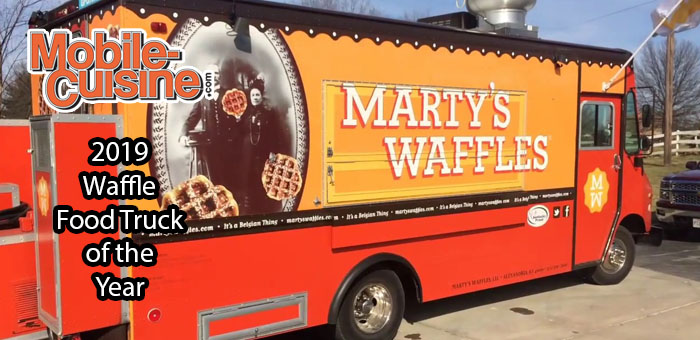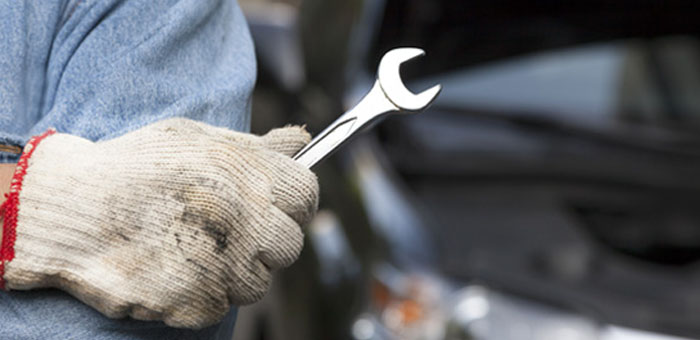If you’re looking for a DIY guide to set up your own food truck and establish a profitable mobile food business, you’ve come to the right place. In this guide with a companion video series, you’ll learn everything you need to know about building a food truck yourself.
Building a food truck is definitely not easy and there are a lot of steps to consider from the plumbing to electrical and meeting all the healthcare requirements, but it is possible. With a bit of knowledge, the right tools, and some patience, it is possible to pull it off.
Page Contents
- Getting Started
- Food Truck Flooring and layout
- Food Truck Electrical
- Setting up the gas lines
- Plumbing in a Food Truck
- Installing a 3-Compartment Sink
- Installing Food Truck Equipment
- Installing Food Truck Cooking Equipment
- Building a Fire Suppression System
- How-to Install a Concession Window
- How-To Install Food Truck Lighting
- Is it Cheaper to Build a Food Truck Yourself?
- Final thoughts
Getting Started
To get started, you’ll need to find a good trailer, bus, truck, or other vehicle suitable as your mobile food unit. Whatever type of vehicle you choose, you will most likely be looking for a used vehicle. Compared to the brand new ones, the slightly used ones are much cheaper. You can view used units at the Food Truck Empire Marketplace. You can also find a list of reputable food truck builders in our directory if you decide building a truck yourself is too much work.
You should also consider the size requirements for your food truck. One of the most important factors in determining the size of your truck is the cooking equipment you plan to install and the serve the food.
If you’re only plan to sell drinks or shaved ice, a reasonable small-sized truck would be enough. The 16 foot food truck floor layout is the most popular size if you’re looking for a solid all-purpose unit. A 16 food unit will enable you to serve popular food ideas such as sandwiches, hamburgers, Mexican food, and sushi to name a few.
Now that my little disclaimers are out of the way, let’s start the process of building your own food truck in 10 steps. Each step in the process includes a corresponding video so you can watch how it’s done.
Food Truck Flooring and layout
Food Truck Layout: The first step is to make a layout or blueprint where you want all your cooking equipment to fit inside a food truck or trailer. You can make this layout easily even on a piece of paper as a concession truck blueprint isn’t all that complicated.
Make sure to think about workflow when creating the layout for your food truck. You don’t want to be walking from the back to the front of the truck just to get the ingredients for a hamburger. This is especially important if you plan to run a truck with more than 1 or 2 employees. Things get cramped in a food truck pretty quick and you want to make sure you’re not walking around, bumping into each other in a trailer with a poor layout. After planning out your food truck’s layout, it’s time to think about flooring.
Related Reading: The Pros and Cons of Diesel Engines for Food Trucks
Food Truck Flooring: Before installing flooring, you would want to prep the floor first by removing any unnecessary trims or obstructions that can get in the way of the floor placement. One pro tip is to remove any transition piece along with the doorway so you can place the flooring right underneath it and get a nice clean finish. After cleaning, you can do a dry fit of the flooring to see how it’s going to fit. If the flooring is wider than the trailer, you can cut or trim the edges before gluing it down.
Next, following the cutting of excess edges, you can now glue the flooring down. In this companion video guide, a Coin Grey Universal Flooring was used and this kind of flooring can be glued down using a floor adhesive.
To glue the floor, start by pulling only half of the flooring back and lay the glue directly to the floor and carefully place the flooring back. Keep in mind not to use too much adhesive to prevent bubbles from forming. Do the same on the other half of the flooring and wait until the adhesive has dried, preferably up to 48 hours depending on the type of floor and adhesive used.
Food Truck Electrical
Having enough electricity in your food truck is important to be able to run the various appliances for your business. A coffee truck in particular requires a higher-level of electrical power to be able to user Espresso machines, coffee makers, and a blender if you sell smoothies.
Caution: Powering a food truck can be a complicated task and mistakes can cause injury or start a fire if you don’t have the proper experience and skill. If you do not feel capable of doing the electrical work, please hire an experienced electrician for the job.
When installing the electrical components of your food truck, you’ll need an electrical S/O cable, which is your main electrical cable to connect to your generator inlet box. This inlet box is where you plug in your generator. Typically, a 50 amp plug is used.
On the food truck, you’ll need to wire it to be 120V if you won’t be using any equipment that has 240V. Then an S/O cable is run underneath the trailer, where it goes to feed the breaker panel.
A breaker panel distributes power to each of the circuits that supply the various lights, outlets, appliances, and other devices throughout the food truck. Wiring a food truck is similar to wiring a house. To see how your food truck electrical system should actually look, you can check on this video for details.
Setting up the gas lines
Caution: Handle propane tanks carefully. To ensure safety, follow propane safety practices and exercise caution when handling tanks, fuel lines, appliances, and generators. If the propane is not installed correctly, you can have an undesirable leak that can cause serious damage. So if you feel uncomfortable installing them on your own, please contact a professional to do it for you.
For your propane lines installation, you’ll need a propane regulator, 3 kinds of gas pipes (a 3/4 x 24 inch, a 3/4 x 12 inch, and a 3/4 x 6 inch gas pipe), a thread sealant and 2 propane tanks. For the changeover, you will need a black steel pipe nipple to connect all the gas pipes. A gap or a 90 degree angle is made to create a perfect spot for the tank to sit for the hood or for the fire suppression system. To see how it actually looks, click play on the video below.
Plumbing in a Food Truck
In this video, PEX tubing (shorthand for cross-linked polyethylene) is used instead of copper pipes. PEX is an easy-to-install alternative to copper piping, costs less than half the price of copper and installs much faster.
Install your freshwater reservoir in accordance with the manufacturer’s instructions. A freshwater reservoir can usually be built within a cabinet on the same side of the trailer as your primary sink, but this can be altered to match space restrictions or local health authority guidelines.
To install your plumbing system, you will need a hand sink, water pump, water heater, PEX pipes, Milwaukee Drill, flexible tube cutter, water tanks for fresh and waste. To connect all your pipes, you’re going to need copper crimp rings, crimp tool, PEX tee’s, PEX 90 degree angles, and PEX elbows.
Start cutting the pipes using the flexible tube cutter to a desirable length according to your plumbing system’s design. And then, to hook up the PEX pipes to the hand sink, connect the 90 degree PEX to the water pipe using the copper crimp rings. Put ceiling tape right around the threads on the back of the sink and connect the pipe with the 90 degree PEX on it.
Install your water pump following the manufacturer’s instructions. The pump’s inlet should be linked to your freshwater reservoir. The water pump is intended to give pressure to the plumbing system in your trailer and should be firmly attached to avoid damage. Ensure the water pump’s power supply is turned off. Connect the inlet side of the hot water heater to the divider on the water pump’s outlet side. Do not connect the water heating unit’s power supply yet, since this could cause harm to the system. Start connecting your tubes according to your plumbing system’s design, securing them with your PEX fittings.
Installing a 3-Compartment Sink
Food truck sinks, like those used in traditional restaurants, must meet certain basic standards. In most circumstances, these criteria apply to both restaurants and food trucks. Installed sinks must have three compartments, including a washing hand sink.
All compartments are utilized for washing, rinsing, and sanitizing your food truck’s equipment, cooking utensils, and other dinnerware. You should also keep in mind that sink compartments must be spacious enough to hold bulky items such as pans and cooking pots.
Set aside each component of your three-compartment sink kit. The center tee, elbow, and drain tailpiece pieces are included in this kit. The elbow part joins the right and left bowls, while the center tee joins the center drain to the two drain tailpieces.
Insert the sink drain and the tailpiece that comes with it. The P-trap assembly will be connected to the component. Make sure the PVC extension pipe is connected to the P-end trap’s path. Move the P-trap and the extension carefully until they touch the drain pipe. Make a mark on the two pipes where the cuts will be made. Cut the drainpipe where you marked it with a hacksaw and smooth any burrs away with sandpaper.
When cutting the PVC pieces, make sure they fit in the spots you marked. Examine your wall thoroughly to determine the location of the drain. Because it connects directly to the p-trap kit, you may not need any additional items to install the center set -drains.
Place the tee so that the sweep is facing up and the outlet is pointed towards the P-trap. Check that the outlet is the same size as the extension pipe. Using the PVC cement, secure the tee to the drainpipe. Join the tee and the extension pipe. Install the p-trap kit on the bottom of the center-set tail, aligning it with the wall. If necessary, you can attach the tailpiece extensions to the bottom of your sink’s drain.
If necessary, you can attach the tailpiece extensions to the bottom of your sink’s drain. Check for leaks and make sure all connections are secured.
Installing Food Truck Equipment
You’ll also need three (3) main food truck equipment, namely the exhaust hood, concession window, and water tanks. The exhaust hood, also known as a range hood, is a device that provides ventilation right above your oven and cooking area.
You’ll need this piece of equipment to clean the food truck of smoke, grease, and other smells. As for the concession window, it serves as the entry point for your clients to receive your delicious food. For these reasons, it’s important to have a concession window for your trailer. Finally, you’ll need two water tanks. One tank for fresh water and another one for the gray or waste water.
Installing Food Truck Cooking Equipment
Building a food truck kitchen is similar to designing a commercial kitchen. You must set aside places for cooking, cooling, storage, and serving. And, because a food truck’s kitchen is significantly smaller than most restaurant kitchens, you’ll need to make the most of every inch of space.
- Fryer: Many food trucks require a fryer to prepare popular menu items such as fried fish tacos, French fries, and chicken wings.
- Griddle: Griddles and grills are essential for preparing popular foods such as burgers, eggs, pancakes, and veggies.
- Range: Ranges enable you to pan fry, sauté, boil, and simmer everything from meats to sauces.
- Microwave: You can use a microwave to reheat food or even steam them.
- Toaster: You can achieve the perfect texture on bread for sandwiches or breakfast foods like waffles, English muffins, and bagels with a toaster.
Related Reading: Essential Coffee Truck Equipment List
Building a Fire Suppression System
A fire suppression system is an engineered group of components designed to extinguish fires. Typically, a fire suppression system includes components that detect fires in their early stages using heat, smoke, and other warning signals. Following the detection and/or alert, the majority of fire suppression systems will automatically apply an external substance to extinguish the fire. Some fire suppression systems, however, feature a manual application release.
Food truck fire suppression systems are similar to typical kitchen fire suppression systems. Modern fire systems are capable of detecting temperature increases. When a dangerous condition is detected, the system cuts the fuel and begins dispersing extinguishing agents throughout the kitchen work areas. The design of the food truck fire suppression system is always brand specific, yet there are several aspects that are common.
In this video guide, they decided to hire a company to install the fire suppression system because it needs to have a tag their county requires. It is important to note that the fire extinguishers are re-tagged every six months or every year. The inspection tag for fire extinguishers contains key info. It is a record of every inspection and its condition, as well as its maintenance history. If your fire extinguisher has a missing tag, it must be replaced.
How-to Install a Concession Window
For your concession window installation, you can start by taking the measurements of the inside lip of your chosen window, from one side to the other (not the outside lip because that’s where you’re going to attach your screws). After measuring the width, do the same thing with the window’s height. If you’re done getting all the measurements of your concession window, mark the measurements to the food truck, and you should be able to cut it out. Make sure you cut and measure accurately. You can watch how to take accurate measurements in the above video.
How-To Install Food Truck Lighting
Having good lighting for your food truck means more than just being able to see what you’re cutting or cooking; it may also have a significant influence on your business in terms of both gaining and sustaining earnings. In order for a food truck to stand out, you need good lights to illuminate your presence, brand, and food to life.
When it comes to light bulbs, there are plenty of options you can choose from. The level of brightness can vary depending on the type of the light bulb, and you can find different styles and colors. There’s the low setting to high setting of brightness, but you’d want to go for the major impact to attract more customers. If your food truck’s the brightest, it stands out. It’s good to choose the LED ones which lets you add a bigger lumen (the higher the number of lumens, the brighter the lightbulb) and not use that much wattage.
Before installing the lights, make an approximate estimate of where the final installation will be. There’s no right or wrong place to put the lights, just place them in strategic places for aesthetic purposes. If you want to learn more about how to properly install your food truck lights, this video will be helpful.
Is it Cheaper to Build a Food Truck Yourself?
The simple answer is that building a food truck yourself is cheaper than working with a customer builder. The main reason? By building a food truck yourself, you remove the cost of labor to outfit the truck with cooking equipment, plumbing and other essential components of a rolling commercial kitchen. Doing it yourself can save you between $10,000 – $20,000 in total startup cost. This is real money that could be reinvested into other aspects of the business.
But do you really want to take on a food truck build project yourself? This is a question only you can answer. First, I’ve known a half dozen people that built their own food truck. You can do it if you’re mechanically inclined. But it will usually take a few months to a year of work to pull it off. Why? Most people don’t have all the right welding equipment, electrical installation equipment and plumbing experience to do it all themselves.
You’ll end up spending a lot of time troubleshooting why something doesn’t work, ordering equipment, and research. If building is something you love do, by all means go for it! Recognize the goal is to start a food truck business, not become a custom builder.
Final thoughts
The food truck sector is growing at a rapid pace, and it’s easy to see why. It’s a good time to get in on the action, whether you’re taking your goal of mobile restaurant ownership or adding a mobile aspect to your existing business. Building a food truck is not an easy task, but it is possible.
One final note of importance is that it’s imperative for food truck owner take precautions to ensure you’re operating a safe unit. For steps you don’t have experience with like setting up a gas line, I strongly encourage hiring out an expert for specific jobs in the build-out process.
Also note that there are safety measures designed and regulations that are dependent on your area’s local health authority. In other words, make sure you know what you’ll need from a health code perspective before you get started. The requirements are a little bit different in each city and state.
As an example, one global requirement is to include a 3-compartment sink inside the unit with access to hot and cold water. Get the list of requirements from your local health department before starting a DIY build so you know the exact equipment you’ll need. There are guidelines for cleaning, ventilation, plumbing, food handling and safety requirements that vary by region.




